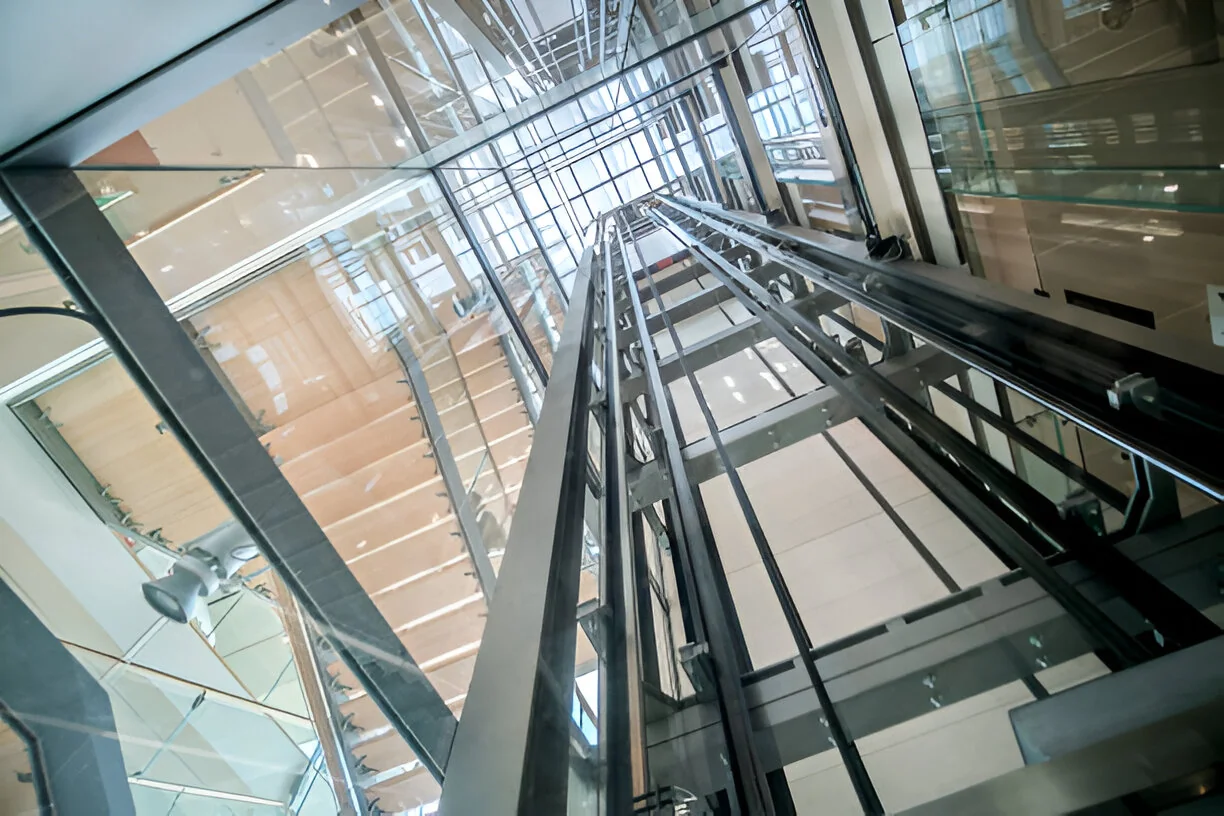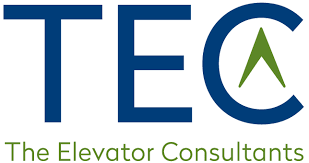As a building owner or property manager, you are responsible for the safety of your building’s tenants and visitors. A few of the many aspects of safety you need to be well-versed in are ASME A17.1 / CSA Handbook on Safety Code for Elevators and Escalators (ASME A17.1), Americans with Disabilities Act (ADA) Accessibility Guidance for Buildings and Facilities and numerous other code requirements to understand fully the compliance of your building. It is common for people to ask an elevator consultant about the code they need for their elevators. 
Why Building Owners Need to Know About ASME A17.1
Here are some important elevator standards for building owners:
ASME A17.1 – This is the primary safety code for the design, construction, installation, operation, inspection, testing, maintenance, alteration, and repair of elevators and escalators in the USA. It covers required safety features for vertical transportation, from maximum travel distances to equipment requirements, testing, and much more. This codebook should be in every building or within an organization with elevators. It is easily referenced, with information available immediately.
ADA Standards
The Americans with Disabilities Act sets requirements for elevators to ensure accessibility and conditions for the elevator to comply with standards like braille, door open times, door width, button height, size of buttons, and more. There are different requirements for different buildings based on the use of the building. New and existing buildings must follow; however, some elevators comply at installation time.
NFPA 101 Life Safety Code
This protects people in numerous areas and must be included when elevators are installed within a building. A building must comply with this requirement, from firefighter service to needed sprinklers and more. People may refer to their fire life safety company for other work that may tie into the elevator functionality that the building needs.
Local Codes
Most jurisdictions have adopted some version of ASME A17.1 and other rules and regulations that may go beyond the abovementioned codes. It is critical that the building knows what the principles are and the code year their equipment is under. The facility must adhere to this code. The facility should also be aware of special code requirements that are required and not in these books. The service provider may inform the structure of the new code requirement, but it is ultimately the responsibility of the building. Building owners need to check with the local authority.
Staying current with the latest edition of all applicable standards for an elevator, escalator, lift, etc., making alterations to your equipment, or installing a new elevator is best practice. A general knowledge ensures maximum safety, legal compliance, and quality for any building’s elevators. An establishment may have to bring in an elevator consultant, fire life safety consultant, or others to ensure they are fully compliant. If the building needs clarification, these experts can help.
FAQ: Understanding ASME A17.1 safety code standards for Elevators
The ASME A17.1 Safety Code for Elevators and Escalators is a crucial benchmark in ensuring the safety, reliability, and efficiency of vertical transportation systems. While navigating this technical standard, building owners, property managers, and facility operators often raise common questions. Below is a detailed breakdown of frequently asked questions (FAQs) about ASME A17.1, paired with insightful responses.
What is ASME A17.1, and why is it important?
ASME A17.1 is the Safety Code for Elevators and Escalators, established by the American Society of Mechanical Engineers. It sets out minimum requirements for the installation, operation, maintenance, inspection, and testing of elevators, escalators, and related equipment.
Why it matters: Adhering to ASME A17.1 ensures the safety of passengers and operational compliance with state and local laws. It minimizes liability risks and promotes efficient and reliable vertical transportation systems.
How frequently should elevator inspections occur under ASME A17.1?
ASME A17.1 requires periodic inspections based on the type of elevator and its usage. For example:
- Hydraulic elevators typically require annual inspections.
- Traction elevators may require both annual and five-year full-load tests.
- Escalators undergo annual skirt performance tests.
Pro Tip: Regular audits by consultants, such as The Elevator Consultants, can ensure compliance and provide peace of mind.
What maintenance records are required to comply with ASME A17.1?
Building owners must maintain detailed records of all elevator activities, including maintenance, inspections, testing, and repairs. The code specifies that these records should be available for review by inspectors at any time.
Digital Solutions: Platforms like ElevatorApp™ streamline record-keeping, making compliance easier by storing and managing all necessary documents digitally.
What safety features must be regularly inspected according to ASME A17.1?
There are several safety features which are listed in the code. A few safety features include:
- Door sensors to prevent accidents.
- Emergency alarms and interlocks to ensure functionality during entrapments.
- Firefighter operations to comply with fire safety standards.
- Many more are listed in the code.
Proactive Maintenance: Regular checks and service on these components help mitigate potential liabilities.
What are the common pitfalls that lead to non-compliance with ASME A17.1?
- Deferred Maintenance: Overlooking scheduled repairs or inspections.
- Outdated or Broken Equipment: Failing to repair, modernize or update systems to meet current standards required.
- Poor Recordkeeping: Not maintaining thorough and accessible service logs.
- Testing: Required testing is not completes.
Solution: Consulting services help identify and rectify these gaps, ensuring code adherence.
How does ASME A17.1 address modernization projects?
Modernization projects must align with the latest ASME A17.1 standards, which include requirements for safety upgrades, energy efficiency, and compliance testing. Consultants typically guide buildings through these requirements to ensure smooth transitions.
What code year for ASME A17.1 am I under?
The ASME A17.1 Safety Code for Elevators and Escalators is updated regularly, with new editions released approximately every three years. Determining the code year you are under depends on several factors, primarily dictated by the local authority having jurisdiction (AHJ) and the state or municipality’s adoption timeline. Here’s how to determine your applicable code year:
What Code Year for ASME A17.1 Am I Under?
The ASME A17.1 Safety Code for Elevators and Escalators is updated regularly, with new editions released approximately every three years. Determining the code year you are under depends on several factors, primarily dictated by the local authority having jurisdiction (AHJ) and the state or municipality’s adoption timeline. Here’s how to determine your applicable code year:
- Consult Your Local AHJ
Each AHJ decides which version of ASME A17.1 is enforced within its jurisdiction. This information can typically be found through:
- Local building departments
- State elevator safety boards
- Municipal code enforcement agencies
For example, some states may adopt the most recent version, while others may enforce a code from several years ago if they have not updated their regulations.
- Review Your Elevator Installation or Modernization Timeline
The ASME A17.1 code year often aligns with the year your elevator was installed or last modernized.
- Check Your Maintenance Contracts or Inspection Reports
Maintenance agreements and inspection records often indicate the ASME A17.1 code year under which your equipment is maintained and inspected. Look for references to code-specific requirements or testing protocols, such as Category 1, 3, or 5 tests, which are part of ASME A17.1.
- Engage an Elevator Consultant or Vertical Transportation Consultant
If you’re uncertain or managing a building with multiple elevators across different jurisdictions, hiring a vertical transportation consultant is the most reliable way to confirm your code compliance. Consultants stay up-to-date on local regulations and can provide an authoritative answer
- Look for Updates or Notices from AHJs
Sometimes, AHJs notify property owners when new code editions are adopted or require action for compliance. Regularly reviewing correspondence from local authorities ensures you’re aware of any changes.
How can a building verify its elevators are ASME A17.1 compliant?
Engage professional elevator consultants to perform audits, which include:
- Performance Assessments: Evaluating operational efficiency.
- Safety Inspections: Checking adherence to mandated safety standards.
- Compliance Testing: Ensuring all regulatory requirements are met.
What steps should be taken if non-compliance is detected?
- Hire a Vertical Transportation Consultant: Professionals like The Elevator Consultants offer tailored solutions to address deficiencies.
- Review Contracts: Ensure maintenance agreements specify compliance responsibilities.
- Implement Corrective Actions: Address immediate safety concerns and schedule necessary upgrades.
Why Partner with The Elevator Consultants?
Navigating ASME A17.1 standards can be daunting. The Elevator Consultants provide unparalleled expertise to:
- Conduct Comprehensive Audits: Identifying compliance gaps and cost-saving opportunities.
- Streamline Maintenance Processes: Ensuring regular upkeep meets code requirements.
- Deliver Peace of Mind: Guaranteeing your elevators operate safely and efficiently.
Get Started Today! Contact us at TheElevatorConsultants.com to schedule a consultation. Elevate your building’s compliance and performance standards effortlessly.
